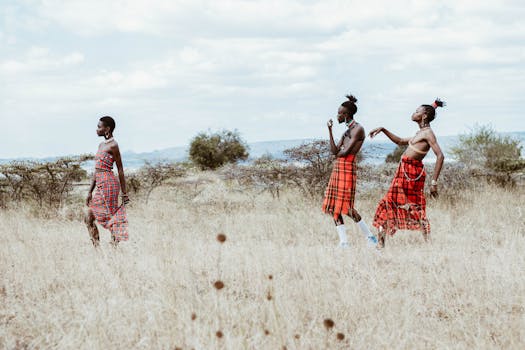
Connecting Cultures: The Story Behind Africa’s Diverse Fiber Traditions – WordPress
Connecting Cultures: The Story Behind Africa’s Diverse Fiber Traditions is a fascinating topic that highlights the rich cultural heritage of the African continent. Africa’s diverse fiber traditions are a testament to the continent’s vibrant cultural diversity, with each region having its unique textile art, techniques, and materials. From the colorful kente cloth of Ghana to the intricate bogolanfini of Mali, African fiber traditions are a reflection of the continent’s complex history, cultural exchange, and creative expression.
Introduction to African Fiber Traditions
African fiber traditions have been an integral part of the continent’s cultural heritage for centuries. Fiber arts, including weaving, dyeing, and embroidery, have been used to create a wide range of textiles, from clothing and accessories to home furnishings and ceremonial objects. These textiles not only serve practical purposes but also carry significant cultural, symbolic, and spiritual meanings. In many African cultures, fiber arts are considered a vital part of tradition, identity, and community, with techniques and designs passed down from generation to generation.
The Diversity of African Fiber Traditions
Africa’s diverse fiber traditions are a reflection of the continent’s geographic, cultural, and linguistic diversity. Each region has its unique fiber arts, with different materials, techniques, and designs. For example, the Maasai people of East Africa are known for their vibrant beadwork and embroidery, while the Yoruba people of West Africa are renowned for their intricate weaving and dyeing techniques. The Berber people of North Africa are famous for their colorful tapestries and rugs, which are often adorned with symbolic motifs and patterns.
In addition to these regional traditions, African fiber arts have also been influenced by external factors, such as trade, colonization, and migration. The trans-Saharan trade, for example, introduced new materials, techniques, and designs from the Mediterranean and Middle East, which were incorporated into African fiber arts. The colonial period also had a significant impact on African fiber traditions, as European colonizers introduced new materials and techniques, such as cotton and mechanized weaving.
Promoting Cultural Exchange and Understanding
African fiber traditions have the power to connect cultures and promote cultural exchange and understanding. By sharing and celebrating these traditions, we can learn about the history, values, and beliefs of different African cultures. We can also appreciate the creativity, skill, and craftsmanship that goes into creating these beautiful textiles. Moreover, African fiber traditions can inspire new generations of artists, designers, and cultural enthusiasts to explore and innovate traditional techniques and materials.
In recent years, there has been a growing interest in African fiber arts, with many designers, artists, and collectors seeking to learn about and appreciate these traditional crafts. This interest has led to the establishment of festivals, exhibitions, and workshops that showcase African fiber traditions and provide a platform for cultural exchange and collaboration. For example, the African Textile Festival, held annually in Ghana, brings together artists, designers, and cultural enthusiasts from across the continent to celebrate African fiber arts and promote cultural understanding.
Conclusion
In conclusion, Connecting Cultures: The Story Behind Africa’s Diverse Fiber Traditions is a fascinating topic that highlights the rich cultural heritage of the African continent. African fiber traditions are a testament to the continent’s vibrant cultural diversity, with each region having its unique textile art, techniques, and materials. By promoting cultural exchange and understanding, we can appreciate the creativity, skill, and craftsmanship that goes into creating these beautiful textiles and inspire new generations of artists, designers, and cultural enthusiasts to explore and innovate traditional techniques and materials.

